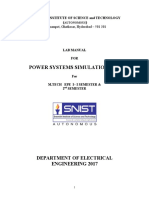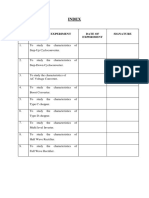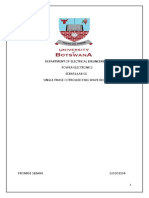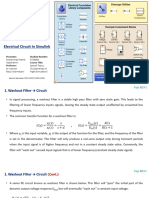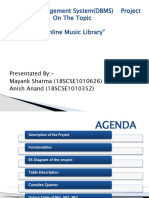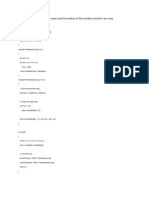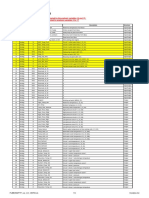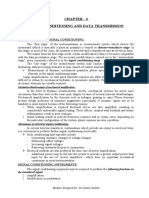0% found this document useful (0 votes)
50 views40 pagesExperiment File
1. The document provides details of 13 experiments conducted using software like MATLAB, Simulink, and LTspice to study various electrical and engineering concepts.
2. The experiments include modeling series RLC circuits, studying half wave and full wave rectifiers, modeling mass dump springs, constructing PID controllers, solving quadratic equations, and analyzing inverting and non-inverting amplifiers.
3. For each experiment, the document provides the aim, theory, circuit diagrams modeled in Simulink or LTspice, and simulation results.
Uploaded by
Pankaj SharmaCopyright
© © All Rights Reserved
We take content rights seriously. If you suspect this is your content, claim it here.
Available Formats
Download as DOCX, PDF, TXT or read online on Scribd
0% found this document useful (0 votes)
50 views40 pagesExperiment File
1. The document provides details of 13 experiments conducted using software like MATLAB, Simulink, and LTspice to study various electrical and engineering concepts.
2. The experiments include modeling series RLC circuits, studying half wave and full wave rectifiers, modeling mass dump springs, constructing PID controllers, solving quadratic equations, and analyzing inverting and non-inverting amplifiers.
3. For each experiment, the document provides the aim, theory, circuit diagrams modeled in Simulink or LTspice, and simulation results.
Uploaded by
Pankaj SharmaCopyright
© © All Rights Reserved
We take content rights seriously. If you suspect this is your content, claim it here.
Available Formats
Download as DOCX, PDF, TXT or read online on Scribd
/ 40



